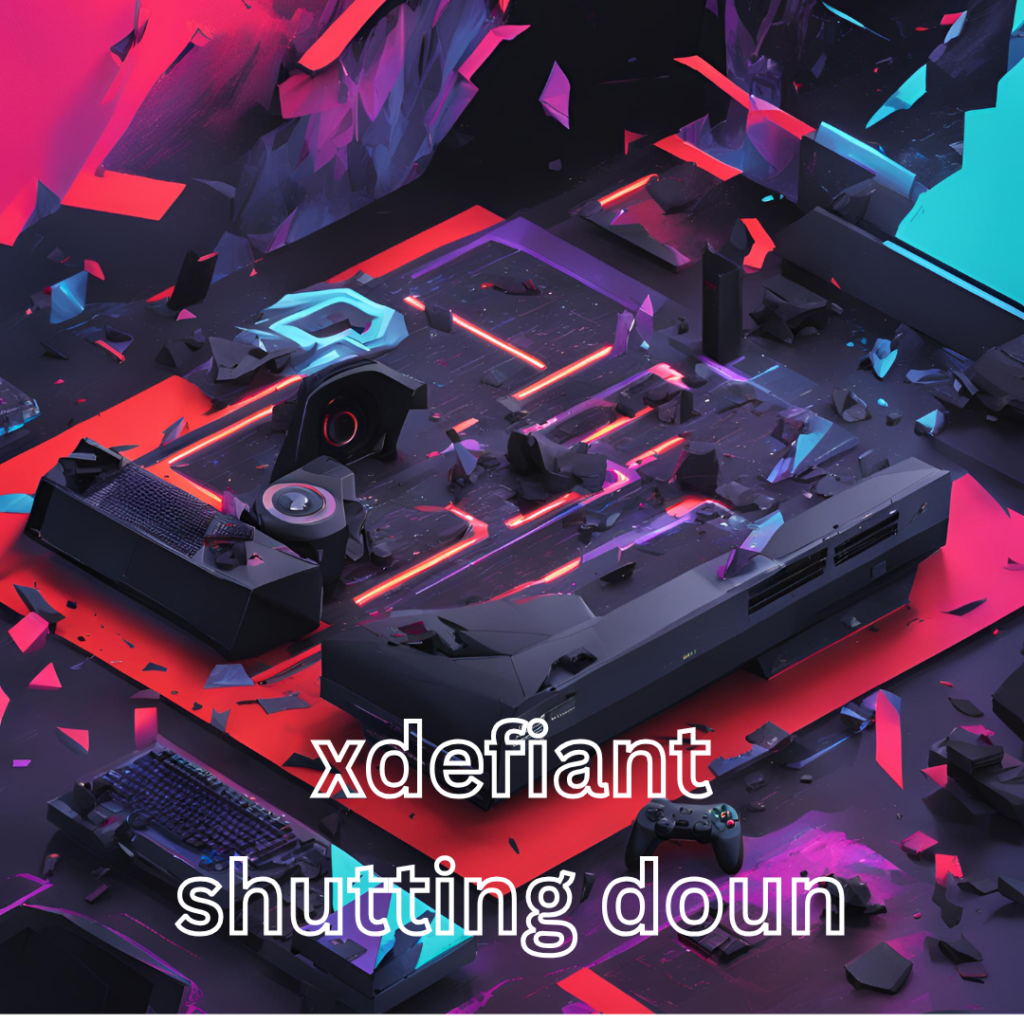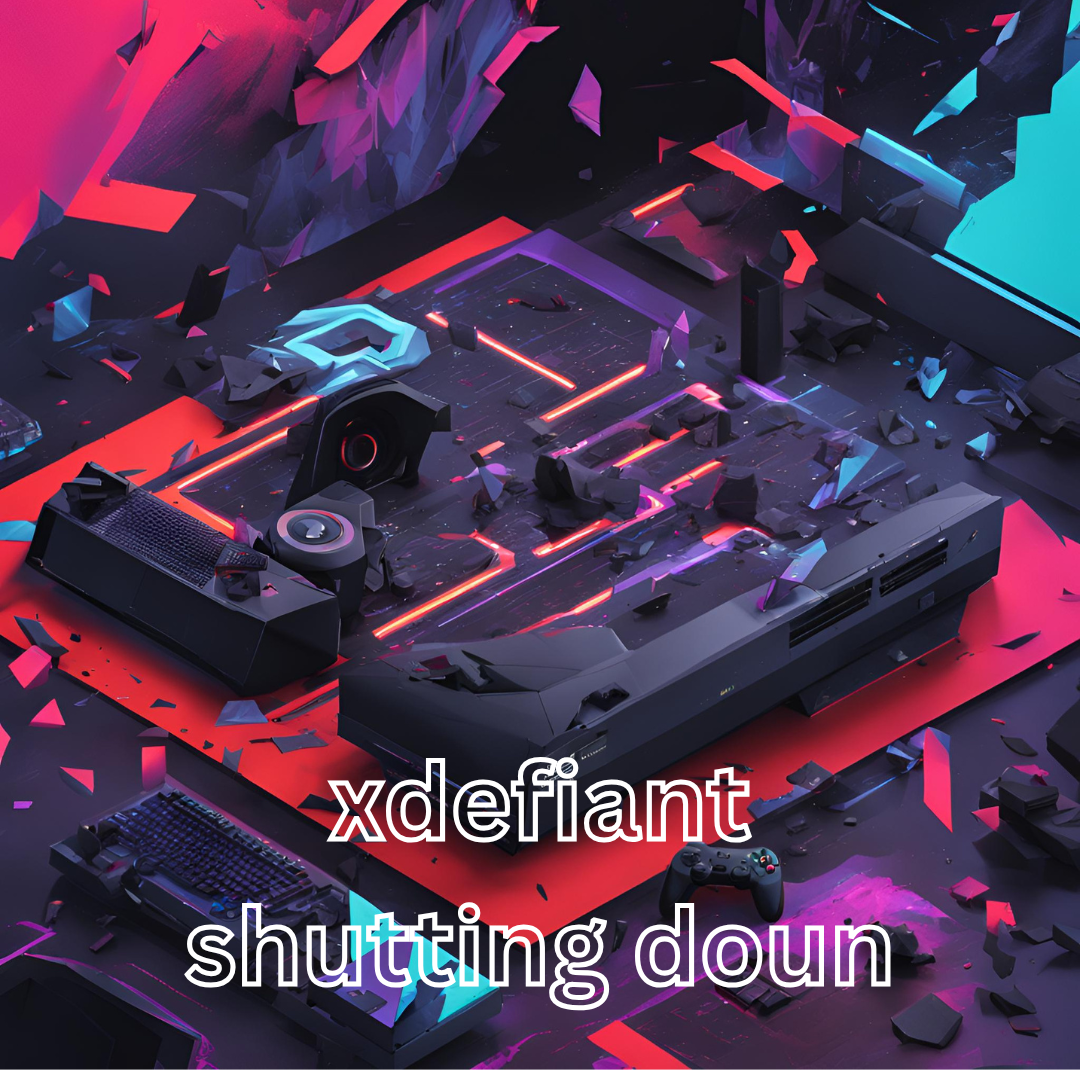Why is XDefiant Getting ShutDown?
Since its official announcement in 2021, XDefiant—Ubisoft’s ambitious free-to-play multiplayer first-person shooter—has generated considerable excitement in the gaming community. A hybrid of classic first-person shooter (FPS) elements with the strategic character abilities from games like Overwatch and Call of Duty, XDefiant promised a fast-paced, action-packed experience with a roster of factions and engaging team-based gameplay. Despite its promising premise, the game has announced that it will be shutting down in early 2024, leaving fans and the gaming world scratching their heads. But why is XDefiant getting shut down?
In this blog, we’ll break down the reasons behind the shutdown of XDefiant and analyze what went wrong, what could have been done differently, and what this means for Ubisoft’s future in the multiplayer FPS space.

1. A Highly Competitive Genre
The most obvious reason why XDefiant has struggled to find a lasting audience is the sheer competitiveness of the multiplayer FPS genre. Games like Call of Duty, Fortnite, Apex Legends, Valorant, and Overwatch have already dominated the market. These titles not only have established fanbases but also massive, highly-engaged player communities and consistent updates that maintain their relevance.
Ubisoft, traditionally known for its vast open-world games and story-driven experiences like Assassin’s Creed, tried to enter a space that was already saturated with both AAA juggernauts and indie success stories. To make matters worse, many of these established franchises already benefit from years of player feedback and optimization, making it difficult for newcomers like XDefiant to carve out a niche.
XDefiant’s inability to gain traction in a crowded space meant that it struggled to maintain a steady player base. Games that don’t attract and retain a strong community early on tend to lose steam, and XDefiant faced exactly this issue. Players looking for fresh experiences often find themselves migrating to more polished, established titles, and XDefiant couldn’t keep up.
2. Lack of Clear Identity
One of the main problems that surfaced during XDefiant’s life cycle was its lack of a clear identity. While the game was initially pitched as a fusion of Call of Duty‘s fast-paced action and Overwatch’s class-based abilities, it ended up feeling like a blend of concepts without fully committing to any one style.
On the one hand, XDefiant had the basic mechanics of a fast-paced shooter—gunplay, maps, and modes that felt like they were lifted from other successful franchises. On the other hand, its attempt to incorporate hero abilities, faction-based play, and customizable loadouts felt somewhat forced. Unlike Overwatch, which built its identity around the characters’ backstories and unique playstyles, XDefiant didn’t offer enough depth in its factions or heroes to make players feel attached to specific characters.
Moreover, XDefiant didn’t do enough to distinguish itself from other similar titles. Without a compelling reason to keep playing beyond the initial hype, players quickly moved on to other games that offered a more polished or innovative experience.
3. Technical Issues and Bugs
A game’s launch is crucial to its long-term success, and unfortunately, XDefiant had a rocky one. From the very beginning, players reported numerous technical issues such as server instability, matchmaking problems, and game crashes. These problems were exacerbated by bugs and performance issues, especially on older hardware. While Ubisoft eventually pushed patches to fix many of these issues, the early technical problems left a lasting negative impression on the community.
In the highly competitive world of multiplayer shooters, performance is king. Players are unforgiving when it comes to technical issues—lag, rubberbanding, crashes, and other technical glitches can turn players off from a game quickly. In an era where players have high expectations for quality, XDefiant’s technical shortcomings made it difficult to compete with better-polished titles, and as a result, it lost a considerable portion of its player base.
4. Monetization Issues
Another factor that may have contributed to the shutdown of XDefiant is its monetization model. As a free-to-play game, XDefiant relied heavily on in-game purchases for skins, cosmetics, and battle passes. While these types of monetization strategies have become standard for free-to-play games, XDefiant faced some backlash for offering a lot of paid content, including exclusive cosmetic items locked behind paywalls.
While there’s nothing inherently wrong with offering cosmetics and skins as paid content, the way a game handles monetization can make or break its reputation. If players feel that a game is too focused on pushing microtransactions instead of delivering value through gameplay, they can quickly lose interest. Moreover, when the in-game store feels intrusive, it can alienate players who feel that they are being pushed toward paying for content that could have been unlockable through gameplay.
Ubisoft’s decision to include a battle pass model, while popular in the industry, was met with mixed responses. Many players were unhappy with the pace of progression and the fact that the best items were often locked behind a paywall. This friction in the monetization system likely hurt the game’s long-term retention.
5. Poor Player Retention
Player retention is crucial for the success of any live service game, and XDefiant struggled in this department. While the game may have attracted initial curiosity from players, it failed to keep them engaged in the long term. Despite regular updates and new content, the game didn’t have enough depth or long-term appeal to keep players coming back.
The lack of meaningful content updates and compelling incentives for continued play, especially in comparison to competitors like Apex Legends or Valorant, made it easy for players to move on. Players found themselves quickly burning out on the repetitive gameplay loop, or they simply gravitated toward more rewarding experiences elsewhere.
6. Poor Communication and Community Engagement
Another contributing factor to XDefiant’s downfall was poor communication between the developers and the community. Many players voiced frustrations with the lack of transparency from Ubisoft regarding upcoming changes, content updates, and game balance adjustments. Players expect to feel heard and involved in the development process, especially when a game is a live service title. However, XDefiant didn’t establish a strong relationship with its community, which ultimately eroded the player base.
The lack of consistent communication regarding the game’s future or even the status of in-progress fixes made many players feel like their concerns were being ignored. For a game to thrive, especially in its early stages, building and maintaining a healthy relationship with its player community is paramount.
7. Ubisoft’s Shifting Focus
It’s also worth noting that XDefiant was a part of Ubisoft’s broader strategy to expand its portfolio into new genres and live service games. However, in recent months, Ubisoft has faced significant financial challenges, and the company has started reevaluating its investments in various projects. There have been reports of the company shifting focus away from some of its less profitable ventures, and XDefiant may have simply fallen victim to this shift in priorities.
Ubisoft has announced that it’s doubling down on its core franchises like Assassin’s Creed, Tom Clancy’s Rainbow Six, and Far Cry, while scaling back on some of its live-service games. With XDefiant struggling to gain a foothold, it’s possible that the decision was made to pull the plug and focus resources elsewhere.
Conclusion: A Missed Opportunity?
The shutdown of XDefiant serves as a cautionary tale about the challenges of launching a free-to-play multiplayer game in a saturated market. Despite Ubisoft’s attempts to create a fresh experience, the game’s lack of a clear identity, technical issues, and weak player retention ultimately led to its downfall.
While it’s disappointing for the dedicated fanbase that stuck with XDefiant in its short life, the closure offers valuable lessons for both developers and players alike. For Ubisoft, it’s a reminder that entering an already crowded space requires not only innovation but also flawless execution. For players, it’s a testament to the importance of a game’s ability to build a strong, engaged community and consistently deliver on promises.
In the end, while XDefiant didn’t live up to its potential, the lessons learned from its failure will likely influence the future of Ubisoft’s live-service projects and possibly reshape how the company approaches multiplayer shooters moving forward.
